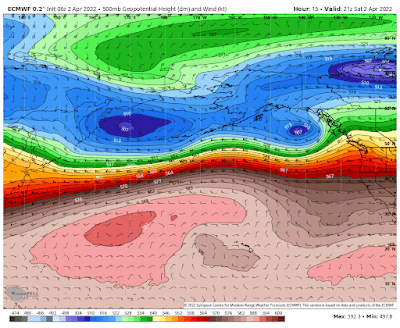As noted in an earlier blog, a very strong jet stream is developing over the north Pacific Ocean and will result in a quick eastward flight across the Pacific. The Japan Airlines flight from Tokyo to Seattle did in in less than 8 hours yesterday!
But the atmosphere is interconnected and there are implications of this flow pattern all over the north Pacific.
For example, the circulation that is producing very strong winds from the WEST in the midlatitude jet stream in the upper troposphere (roughly 25,000 to 35000 ft ASL) results in powerful trade winds from the EAST in the subtropics!
Much of Hawaii is not being buffeted by powerful northeasterly winds, gusting to 30-45 mph (see the plot of winds and gusts at noon PDT). Surf and small craft warnings are now out for much of Hawaii. Let's say snorkeling will not be very good on the NE side of the islands, but those looking for big waves will be delighted.
If we go high in the atmosphere, say around 18,000 ft (500 hPa pressure level), you can see a reflection of the surface conditions, with high pressure (or height) to the south and lower pressure (or heights) to the north.
in this stase a very powerful jet stream from the west (see my NW weather book for an explanation on how this works).

.png)


.gif)



As long as there is no more snow I'm all good haha
ReplyDelete